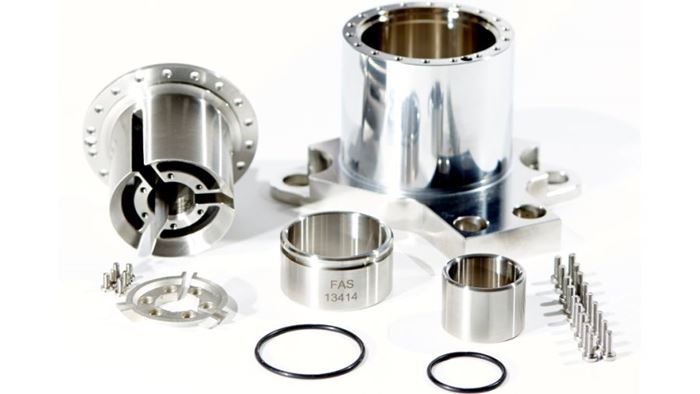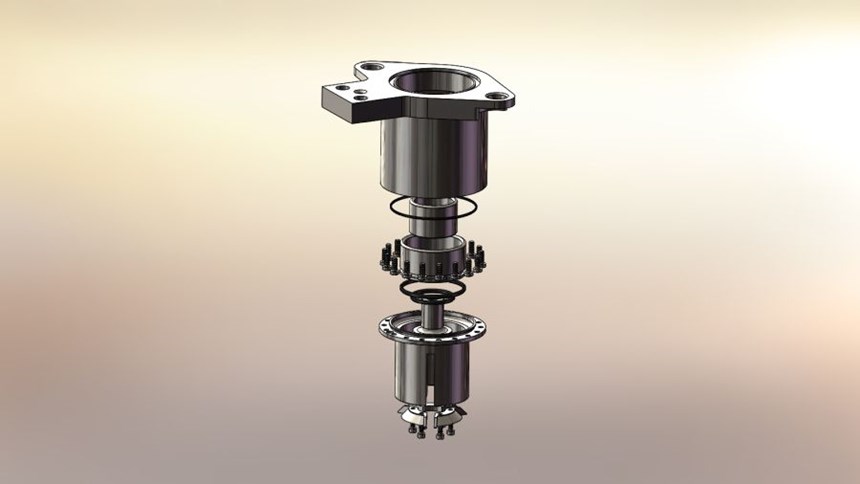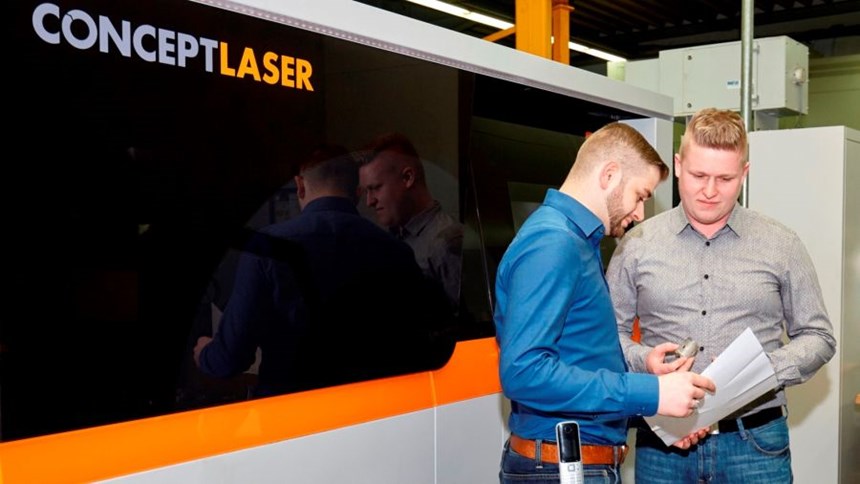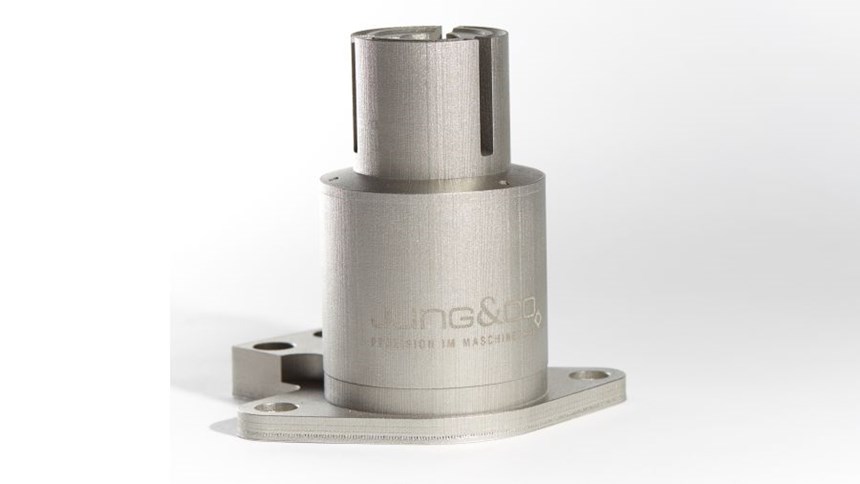Metal Additive Manufacturing Enables Spare Parts on Demand for Beverage Filling Plants
The ability to 3D print metal parts for the beverage filling industry as needed saves cost over conventional methods.
In the food industry, the plants that fill bottles and cans with beverages must be flexible and fast. Downtime at a beverage filling plant is costly, so it is imperative to replace broken parts as soon as possible. Jung & Co. Gerätebau GmbH, a Germany-based manufacturer specializing in stainless steel components, relies on additive manufacturing to ensure that spare parts for beverage filling plants are available quickly and on-demand.
Jung & Co. is a processor of stainless steel that provides production planning, quality assurance and subassembly production. In addition to the food and beverage industry, the company also serves the pharmaceutical, chemical engineering, plant engineering, aviation and fossil fuel extraction industries. For its production work, Jung & Co. uses CNC machine tools as well as an M2 Cusing Multilaser additive manufacturing system from Concept Laser.
“We deliver stainless steel solutions across all processes and consistently focused on the application,” says Thomas Lehmann, managing director of Jung & Co. “The parts or assemblies that we produce are conventionally machined, manufactured in hybrid fashion or completely additively.”
For its beverage filling plant customers, Jung & Co. recognizes that speed is critical. Production rates ranging from 40,000 to 80,000 bottles or cans per hour are common in these facilities, and profitability quickly diminishes when a plant must be shut down. Depending on the size and output of the entire filling line, an hour of lost production may cost from around 4,000 to around 30,000 euros. In a worst case scenario, it may take several days to find the fault, request a spare part, ship and install it.
The time and cost of manufacturing these spare parts is an added burden. One example cited by Lehmann is a filler valve for a can filling plant. When manufactured by conventional means, the valve assembly consists of seven components milled or turned from stainless steel 1.4404. Following machining, the components must have seals applied and be fitted manually. Manufacturing the assembly by conventional means takes 8 to 15 weeks, including the procurement of a required precision cast part.
Previously, Jung & Co. would have kept a spare valve assembly in storage so that the plant could be up and running quickly in the event of a failure. However, with the metal additive manufacturing capacity provided by the Concept Laser M2, this is no longer necessary.
The M2 Multilaser system uses two 400-watt lasers to fuse fine metal powder, which then cools and solidifies to form a part. Each layer is between 15 and 500 microns thick. Following the build, the component is moved into a handling chamber that is physically separate from the process chamber. This two-chamber design was a key selling point for Jung & Co. as the company says it makes the machine more convenient to use and safer by containing the powdered metal.
To make the best use of this additive manufacturing technology, Jung & Co. redesigned the can filler valve using topology optimization. The resulting can filler valve was subjected to intensive load tests to ensure that it could withstand required load demands.
The redesigned can filler valve is just one piece that can be manufactured in one operation on the M2, meaning there is no longer any need for the seals and interfaces that are necessary in the conventionally produced version. The additively manufactured component is 35 percent lighter than the conventionally produced version and avoids cavities, which are a potential source of contamination in the food industry. It takes only one week to manufacture the part additively.
“In principle, this means we can manufacture spare parts on demand and then deliver them on time when the demand suddenly arises,” Lehmann says. The 3D-printed can filler valve is cheaper than a conventional solution, he says, and spare parts no longer need to be purchased in advance and kept in storage, tying up capital.
Jung & Co. is now looking into other uses of metal additive manufacturing technology, such as integrating temperature, cooling or sensors into parts made additively. The company is also working to develop a fully digital process chain for spare parts.
“We will shortly be employing a mobile laser scanner,” Lehmann says. “This will enable us to measure the part that needs to be replaced in situ at the customer’s premises and then construct a fully digital process chain, from the scan to the 3D part ready for installation.”
Related Content
Additive Manufacturing Is Subtractive, Too: How CNC Machining Integrates With AM (Includes Video)
For Keselowski Advanced Manufacturing, succeeding with laser powder bed fusion as a production process means developing a machine shop that is responsive to, and moves at the pacing of, metal 3D printing.
Read More3D Printing with Plastic Pellets – What You Need to Know
A few 3D printers today are capable of working directly with resin pellets for feedstock. That brings extreme flexibility in material options, but also requires greater knowledge of how to best process any given resin. Here’s how FGF machine maker JuggerBot 3D addresses both the printing technology and the process know-how.
Read MoreHow Siemens Energy Applies Additive Manufacturing for Power Generation and More
At an applications center in Orlando, Florida, a small team of AM specialists is spanning industries by 3D printing parts to support both Siemens Energy power generation systems and external customers.
Read MoreAluminum Gets Its Own Additive Manufacturing Process
Alloy Enterprises’ selective diffusion bonding process is specifically designed for high throughput production of aluminum parts, enabling additive manufacturing to compete with casting.
Read MoreRead Next
4 Ways the Education and Training Challenge Is Different for Additive Manufacturing
The advance of additive manufacturing means we need more professionals educated in AM technology.
Read MoreHybrid Additive Manufacturing Machine Tools Continue to Make Gains (Includes Video)
The hybrid machine tool is an idea that continues to advance. Two important developments of recent years expand the possibilities for this platform.
Read More3D Printing Brings Sustainability, Accessibility to Glass Manufacturing
Australian startup Maple Glass Printing has developed a process for extruding glass into artwork, lab implements and architectural elements. Along the way, the company has also found more efficient ways of recycling this material.
Read More
.jpg;width=70;height=70;mode=crop)
























